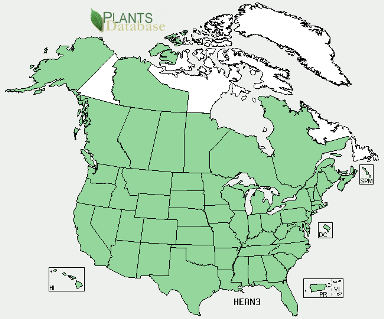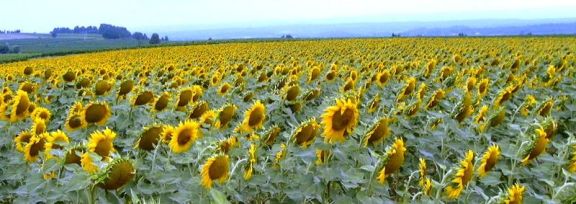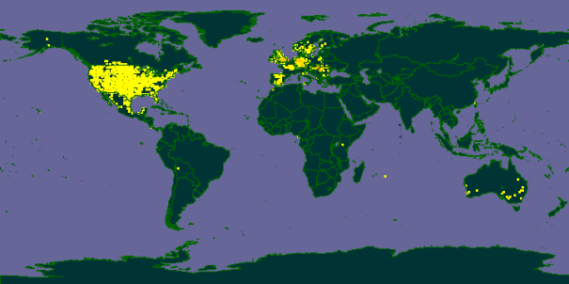Home, sunny home
The sunflower habitat
consists of prairies and dry, open areas.
It is sometimes a weed in cultivated fields and pastures.
It grows best in sunny, moist, or disturbed areas.
The sunflower is tolerant of high and low temperatures, although
more tolerant to low temperatures with the optimum temperature range
being 70-78 degrees Fahrenheit.
Other organisms that live
within the habitat of the
Helianthus annuus include: prairie grasses, wild flowers, members of
the Genus Helianthus, small animals like rodents and snakes and a large
variety of insects.
 This map
shows detail distribution of sunflowers across the
This map
shows detail distribution of sunflowers across the
The distribution of
Helianthus annuus is
throughout
almost all of North America from central

